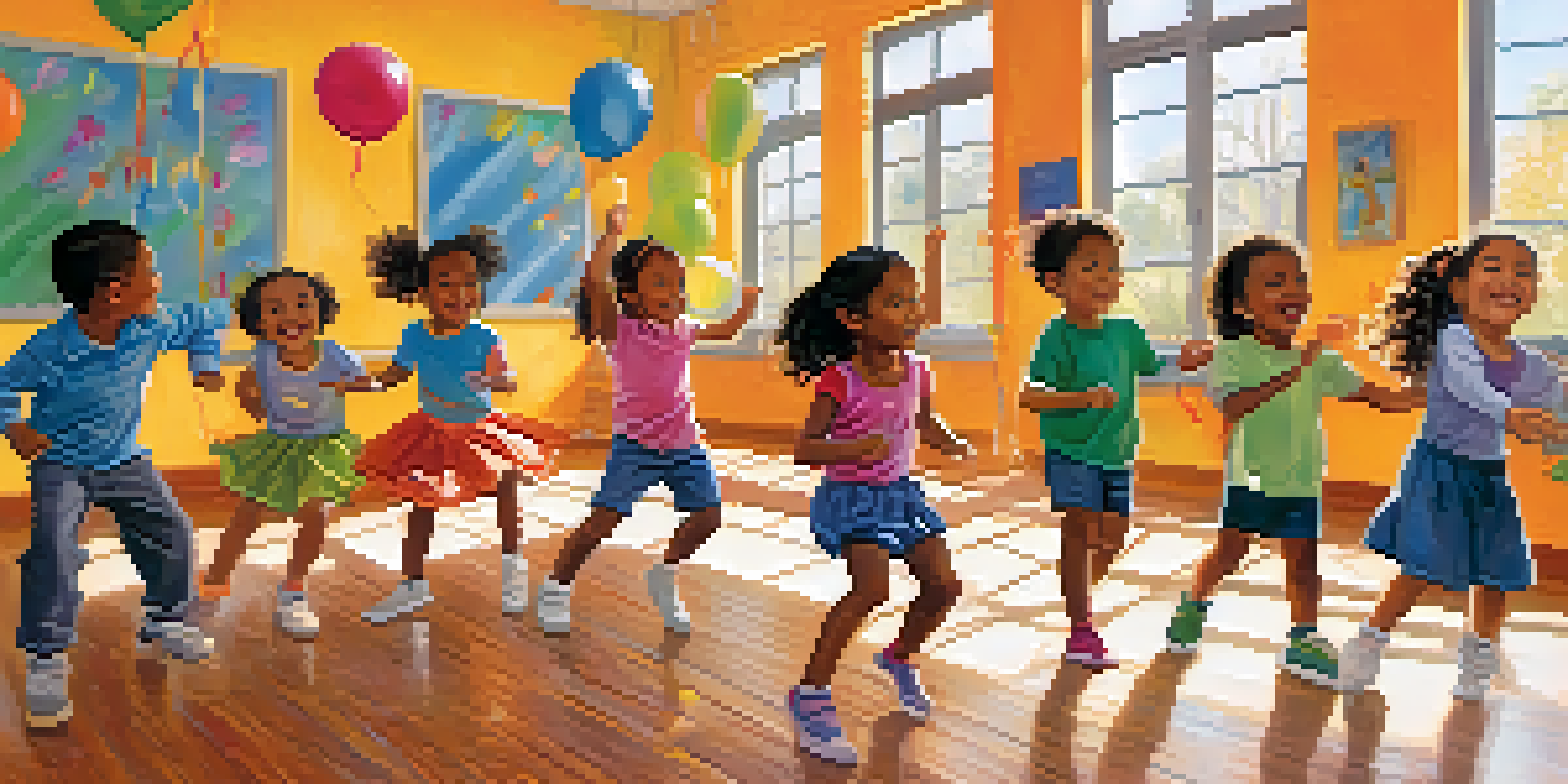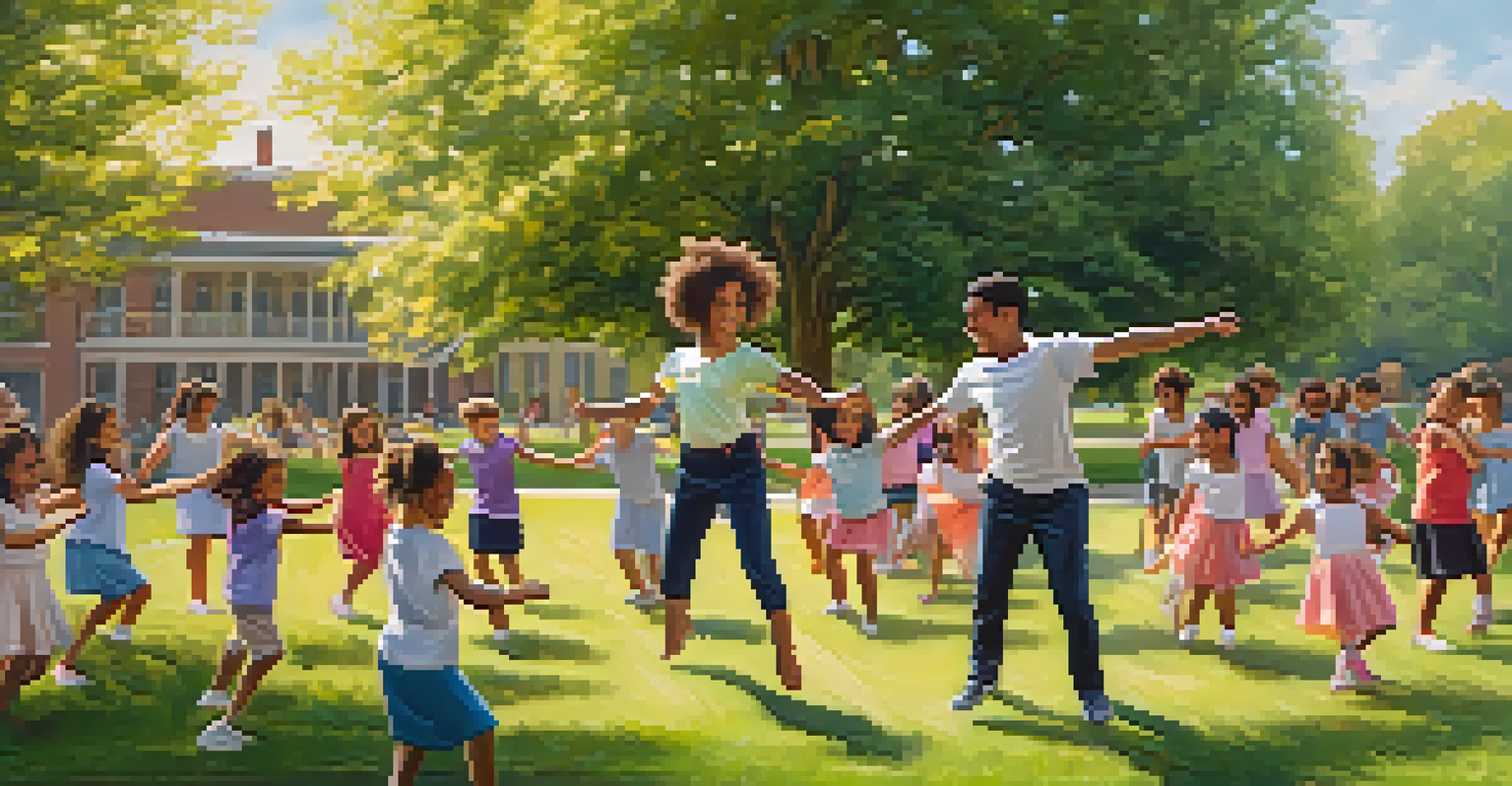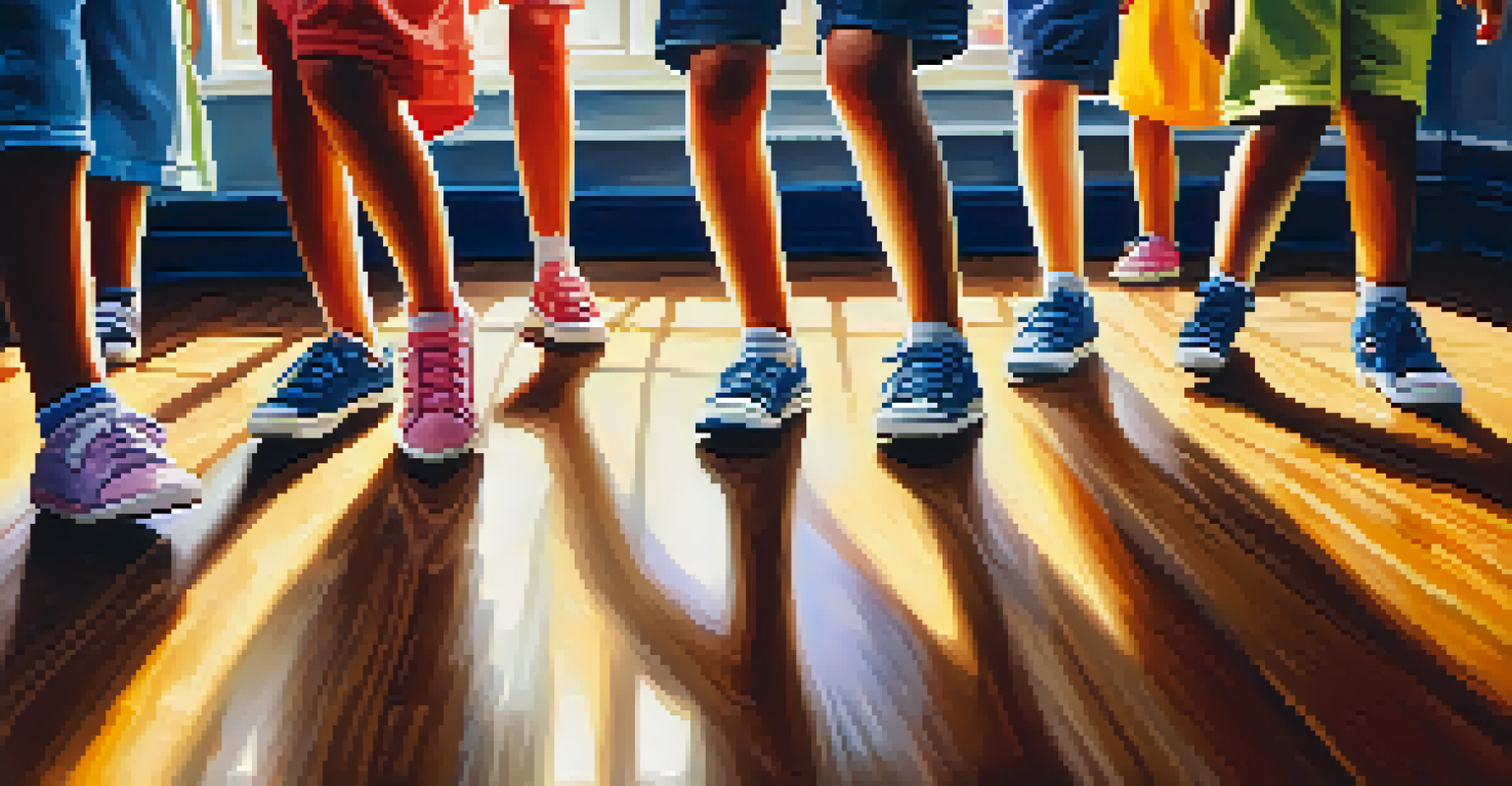The Influence of Dance on Cognitive Development in Children

Understanding Cognitive Development in Children
Cognitive development refers to how children think, learn, and problem-solve. It encompasses skills like memory, attention, and reasoning, which are crucial for academic success and everyday life. During the early years, children's brains are highly adaptable, making this a prime time for interventions that can enhance their cognitive abilities.
Dance is the hidden language of the soul.
Dance, as a form of physical activity, can significantly impact cognitive development by engaging multiple areas of the brain. For instance, when children learn dance routines, they must memorize steps, which enhances their memory skills. This process also encourages them to focus, fostering better attention spans.
Moreover, dance promotes creativity as children express themselves through movement. This self-expression is linked to problem-solving skills, allowing kids to think outside the box and approach challenges with innovative solutions. Overall, cognitive development and dance are interlinked in ways that can benefit children's growth.
The Role of Rhythm in Learning
Rhythm is a fundamental component of dance that plays a vital role in cognitive development. When children engage with rhythm, they not only enhance their musical abilities but also improve their reading skills. This connection is due to the similarities between rhythmic patterns in music and the phonetic patterns in language.

For example, clapping to a beat can help children understand syllables, making it easier to read and write. Additionally, learning to synchronize movements with music can enhance coordination, which has been linked to improved concentration and focus in academic settings.
Dance Enhances Cognitive Skills
Engaging in dance activities boosts memory, attention, and problem-solving abilities in children.
As children participate in rhythmic activities, they develop an internal sense of timing, which can translate into better mathematical skills. Recognizing patterns and sequences in dance can mirror the logical thinking required in math, showing how rhythm can serve as a bridge between different areas of learning.
Social Interaction and Cognitive Growth
Dance often involves group activities that foster social interaction, which is crucial for cognitive development. When children dance together, they learn to communicate, collaborate, and understand social cues. These interactions help build emotional intelligence, which is essential for successful learning in both social and academic contexts.
Movement is a medicine for creating change in a person's physical, emotional, and mental states.
For instance, performing in a dance group requires children to work toward a common goal, enhancing teamwork skills. Through these experiences, they learn to negotiate, share, and empathize with others—skills that are invaluable in the classroom and beyond.
Moreover, social dance forms, such as salsa or line dancing, provide opportunities for children to meet new friends and develop a sense of belonging. This sense of community can reduce anxiety and promote a positive learning environment, ultimately benefiting cognitive growth.
Movement and Brain Development
Physical movement through dance has a direct impact on brain development. Engaging in dance activates various brain regions, including those responsible for memory, coordination, and emotional regulation. This activation encourages neuroplasticity, the brain's ability to form new connections, which is essential for learning.
For example, studies have shown that children who participate in regular physical activities, such as dance, tend to have better executive function skills. These skills include decision-making, problem-solving, and impulse control, which are crucial for academic success.
Rhythm Supports Learning Processes
Rhythmic activities not only improve musical skills but also enhance reading and mathematical abilities.
Additionally, the release of endorphins during physical activity can improve mood and reduce stress. A positive emotional state enhances a child’s ability to learn, making dance not just a fun activity but a powerful tool for cognitive development.
Dance as a Tool for Memory Enhancement
Learning and performing dance routines require memorization, which can significantly boost children's memory skills. As children practice dance steps and sequences, they engage their working memory, which is essential for processing and retaining information. This practice can translate into improved academic performance, particularly in subjects requiring memorization.
For instance, some educators incorporate dance into learning to help students remember facts or vocabulary through movement. This kinesthetic approach caters to different learning styles, making education more inclusive and effective.
Moreover, the repetitive nature of dance helps reinforce memory retention. When children repeatedly practice a routine, they strengthen neural pathways in their brains, leading to better recall and understanding of other subjects.
Creativity and Critical Thinking Through Dance
Dance is not only about following steps; it also encourages creativity and critical thinking. When children are given the opportunity to create their own movements or choreograph routines, they engage in creative problem-solving, which is essential for cognitive development.
For example, improvisation in dance allows children to make quick decisions and think on their feet, fostering adaptability. This skill is not only useful in dance but also in everyday life, from navigating social situations to tackling academic challenges.
Social Interaction Boosts Learning
Group dance activities foster social skills and emotional intelligence, aiding cognitive development.
Additionally, exploring different dance styles exposes children to diverse cultures and perspectives, promoting open-mindedness. This cultural awareness supports critical thinking by encouraging children to analyze and appreciate different viewpoints, further enhancing their cognitive abilities.
The Lasting Benefits of Dance on Learning
The benefits of dance extend beyond childhood, laying a strong foundation for lifelong learning. Children who engage in dance often develop enhanced cognitive skills that continue to support their academic and social lives as they grow. The discipline learned through dance practice can translate into better study habits and perseverance in challenging subjects.
Moreover, as children become more confident in their abilities, they are likely to participate more actively in classroom discussions and collaborative projects. This confidence can lead to a greater willingness to tackle new challenges, fostering a growth mindset.

Ultimately, incorporating dance into children's education can create a more holistic learning experience. By nurturing cognitive development through movement, we can equip future generations with the skills they need to thrive academically and socially.